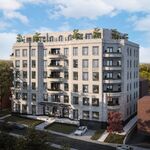Electrify
Senior Member
Imagining cities without mobility
By Jarrett Walker
Philips Corporation, like everyone, is running a livable cities program, in this case a set of awards for individual projects rather than big-picture rankings of cities. I just stumbled on it, and got a rude shock.
There are eight categories: Neighborhood, Mobility, Care, Education, Water, Shade, Sport, and Regeneration -- all excellent things. Obviously, I'm professionally interested in mobility, so I looked to see who was winning there.
The leading candidate for the Mobility award is Plaza Movil Street Park, a proposal (for Buenos Aires, Argentina) for temporary street closures to create community park space. Its benefits are described like this:
Creating recreational spaces for local communities to relax, play, meet, and chat.
That's wonderful. It's glorious. I'm all for it. To use Philips's terms, it's great for Neighborhood, and probably also for Shade. But it's not mobility!
The only relationship that this plan has to mobility is that it takes space normally used for mobility and uses it for something else.
St. Augustine observed that we are always either being or becoming. In urbanism, "being" corresponds to placehood, and "becoming" corresponds to movement or mobility. The late 20th Century car-centered model led to the massive conversion of land area from placehood functions to mobility functions. Transit's great virtue is that it provides a lot of mobility using relatively little space, so that more area can be devoted to places, both public and private.
And yes, a great street provides an experience that integrates placehood and mobility to a degree. And yes, good urban redevelopment also reduces our need for mobility up to a point.
Bravo for well-designed street closures. But to give a street closure a mobility award seems to imply that mobility -- our ability to get to places we want to go to -- just no longer matters.
There is a strong current in New Urbanism, not without detractors, that does seem interested in abolishing mobility. Patrick Condon's idea for Vancouver, for example, would cancel a single proposed subway line and instead replace all of the city's electric trolleybuses with streetcars that go the same speed as the buses do. He would cancel a mobility-improving project and instead spend money in way that that may do great urban things but doesn't increase mobility at all. Once his network was complete, nobody could get anywhere any faster than they can now.
This makes sense only in a context where going places (even under renewable elecric power) is an objective evil. Streetcars, in this vision, supposedly cause greater urban density to be built at livable neighborhood scales, so that people meet more of their needs close to home. People spend most of their time in their own "villages" and others nearby. They simply do not travel far across the city, and had better not be in a hurry when they do.
It's understandable that "urban village" is a winning concept right now. We do need to increase the self-reliance of each part of a city, so that travel demand for many of life's needs can met closer to home. The pendulum swung far the other way in the late 20th century, toward surrendering placehood to movement. I support and eagerly participate in efforts to help it swing back.
But I think we can see what it might look like to swing too far in the new direction. We stay close to home, and thus evolve transport systems that are useful for going short distances and useless for going long ones. And the obvious retort to this is: In that case, why live in a city? Why not just live in a country village, or in a small city?
The whole point of living in a city is to have access to unusual things that are only possible at a large scale. If you want major league sports or a good symphony orchestra or a world-class major university, you need to be in some kind of urban area. If you have a very unusual interest, only a place with lots of people will have a few people who share that interest. If you want choices, you need redundancy, also known as competition. You need there to be two or more sources for whatever service or product or experience you're looking for, readily available from where you live. For those things, you need a certain amount of urban mass, and some options for moving around within it.
The great irony of anti-mobility village-first thinking is that it inevitably leads to monotony -- less choice and therefore less opportunity for people to form specalized communities where unusual thought and creativity can flourish. More disturbingly, it leads to a world where only the internet offers those things, which leads in turn to nightmare images of a world of plugged-in couch potatoes, people who never go outside anymore because their social and intellectual needs simply aren't met by the 500 people who happen to be within walking distance.
The antidote to conformity and monotony is the city. For a city to function as a city, you need mobility. Streetcars are fun to ride, but not if you're in a hurry. Closing a street on Sundays so people can dance is a great thing. But you can't run an economy that way, nor can your citizens feel free.
http://www.humantransit.org/2011/03/imagining-cities-without-mobility.html
By Jarrett Walker
Philips Corporation, like everyone, is running a livable cities program, in this case a set of awards for individual projects rather than big-picture rankings of cities. I just stumbled on it, and got a rude shock.
There are eight categories: Neighborhood, Mobility, Care, Education, Water, Shade, Sport, and Regeneration -- all excellent things. Obviously, I'm professionally interested in mobility, so I looked to see who was winning there.
The leading candidate for the Mobility award is Plaza Movil Street Park, a proposal (for Buenos Aires, Argentina) for temporary street closures to create community park space. Its benefits are described like this:
Creating recreational spaces for local communities to relax, play, meet, and chat.
That's wonderful. It's glorious. I'm all for it. To use Philips's terms, it's great for Neighborhood, and probably also for Shade. But it's not mobility!
The only relationship that this plan has to mobility is that it takes space normally used for mobility and uses it for something else.
St. Augustine observed that we are always either being or becoming. In urbanism, "being" corresponds to placehood, and "becoming" corresponds to movement or mobility. The late 20th Century car-centered model led to the massive conversion of land area from placehood functions to mobility functions. Transit's great virtue is that it provides a lot of mobility using relatively little space, so that more area can be devoted to places, both public and private.
And yes, a great street provides an experience that integrates placehood and mobility to a degree. And yes, good urban redevelopment also reduces our need for mobility up to a point.
Bravo for well-designed street closures. But to give a street closure a mobility award seems to imply that mobility -- our ability to get to places we want to go to -- just no longer matters.
There is a strong current in New Urbanism, not without detractors, that does seem interested in abolishing mobility. Patrick Condon's idea for Vancouver, for example, would cancel a single proposed subway line and instead replace all of the city's electric trolleybuses with streetcars that go the same speed as the buses do. He would cancel a mobility-improving project and instead spend money in way that that may do great urban things but doesn't increase mobility at all. Once his network was complete, nobody could get anywhere any faster than they can now.
This makes sense only in a context where going places (even under renewable elecric power) is an objective evil. Streetcars, in this vision, supposedly cause greater urban density to be built at livable neighborhood scales, so that people meet more of their needs close to home. People spend most of their time in their own "villages" and others nearby. They simply do not travel far across the city, and had better not be in a hurry when they do.
It's understandable that "urban village" is a winning concept right now. We do need to increase the self-reliance of each part of a city, so that travel demand for many of life's needs can met closer to home. The pendulum swung far the other way in the late 20th century, toward surrendering placehood to movement. I support and eagerly participate in efforts to help it swing back.
But I think we can see what it might look like to swing too far in the new direction. We stay close to home, and thus evolve transport systems that are useful for going short distances and useless for going long ones. And the obvious retort to this is: In that case, why live in a city? Why not just live in a country village, or in a small city?
The whole point of living in a city is to have access to unusual things that are only possible at a large scale. If you want major league sports or a good symphony orchestra or a world-class major university, you need to be in some kind of urban area. If you have a very unusual interest, only a place with lots of people will have a few people who share that interest. If you want choices, you need redundancy, also known as competition. You need there to be two or more sources for whatever service or product or experience you're looking for, readily available from where you live. For those things, you need a certain amount of urban mass, and some options for moving around within it.
The great irony of anti-mobility village-first thinking is that it inevitably leads to monotony -- less choice and therefore less opportunity for people to form specalized communities where unusual thought and creativity can flourish. More disturbingly, it leads to a world where only the internet offers those things, which leads in turn to nightmare images of a world of plugged-in couch potatoes, people who never go outside anymore because their social and intellectual needs simply aren't met by the 500 people who happen to be within walking distance.
The antidote to conformity and monotony is the city. For a city to function as a city, you need mobility. Streetcars are fun to ride, but not if you're in a hurry. Closing a street on Sundays so people can dance is a great thing. But you can't run an economy that way, nor can your citizens feel free.
http://www.humantransit.org/2011/03/imagining-cities-without-mobility.html




